| *Build a Partial Bench Cut Trail* |
|
How to Build a Trail Using the Partial Bench Cut
with Cribbing |
| Before we go any further you might like
to know what the heck we're talking about, so here's a brief explanation of what a bench
cut, partial bench cut, and cribbing exactly are. |
| When
building a trail on a slope, it's always best to run the trail across the slope, rather
than up and down it, this helps prevent erosion and is usually easier to ride. |
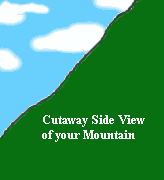 |
| One
way to achieve this is the Full Bench Cut which simply means you dig the
trail out of the mountain, or in sculpture terms, remove everything that's not
the trail. |
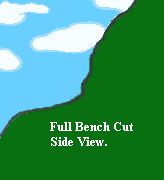 |
According
to IMBA, this will require less maintenance and
shed water better because the soil is already packed hard and consistently
throughout. |
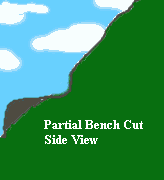
|
An
alternative to the Full Bench Cut is the Partial Bench Cut
where you only dig out part of the trail and use the dirt to build up the outer edge. This
is less desirable because the outside edge isn't packed as hard and usually needs to be
retained with Cribbing. |
| Cribbing involves building a retainer for the dirt, to
prevent erosion and act as a 'dirt dam'. The retainer is usually made by placing a fallen
tree or branch across two growing trees on the upslope side. If there are no trees growing
you'll have to use long stakes instead (this is lots of fun). |
| Question:
Why did you idiots build your trail with the partial bench method? Answer: It
was the best solution for this particular trail. Angry Beaver Trail is
about 1/8 of a mile long built on the backside of a parking lot that was illegally filled
in with all kinds of debris, including various soil types, concrete chunks, railroad ties,
coal slag, and just about any other kind of junk you can dump over the edge of a bank.
Much of the fill is still very loose, and the grade is darn steep (that's a technical
term). Combine those two factors with all the debris buried in this thing, and it would
have just been impractical. On the other hand we had lots of trees, both alive and dead to
work with, as well as lots of rocks and fill. It will require more maintenance, but it's
easy to get to, is very short, and will probably be destroyed anyway when they fix the
heavily trafficked bridge nearby, or if the Rail-Trail ever gets permission to go through.
Here's how it's done (hold mouse over pictures
for more info). |
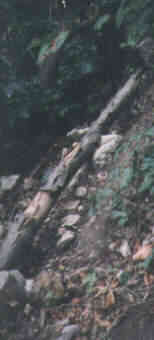 |
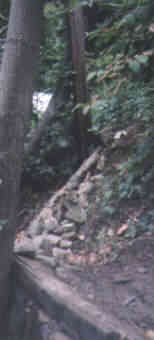 |
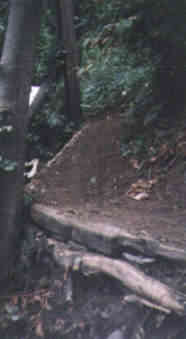 |
| Read Disclaimer on top
and for real information on trail building visit IMBA. |
|